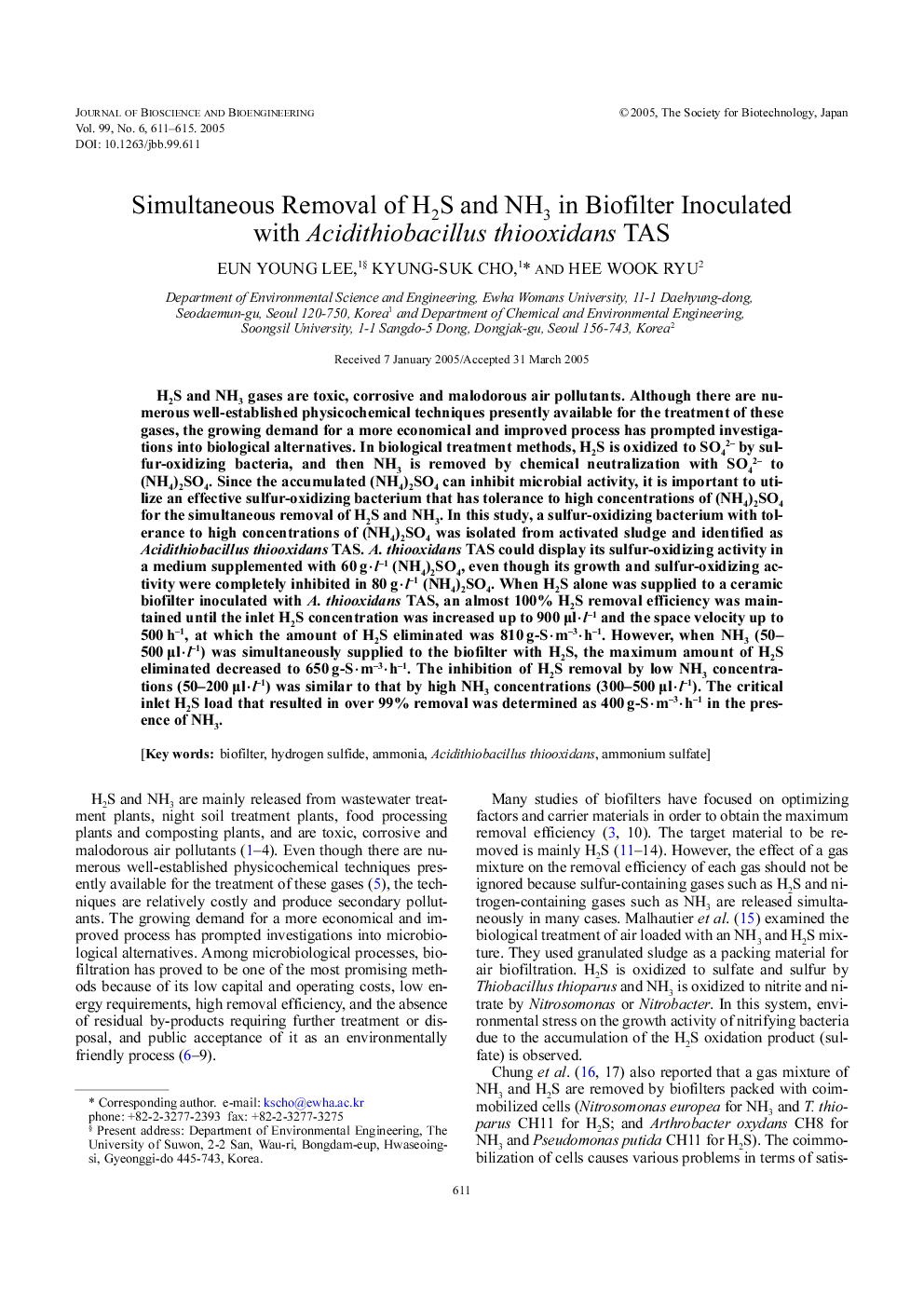| Article ID | Journal | Published Year | Pages | File Type |
|---|---|---|---|---|
| 9603207 | Journal of Bioscience and Bioengineering | 2005 | 5 Pages |
Abstract
H2S and NH3 gases are toxic, corrosive and malodorous air pollutants. Although there are numerous well-established physicochemical techniques presently available for the treatment of these gases, the growing demand for a more economical and improved process has prompted investigations into biological alternatives. In biological treatment methods, H2S is oxidized to SO42- by sulfur-oxidizing bacteria, and then NH3 is removed by chemical neutralization with SO42- to (NH4)2SO4. Since the accumulated (NH4)2SO4 can inhibit microbial activity, it is important to utilize an effective sulfur-oxidizing bacterium that has tolerance to high concentrations of (NH4)2SO4 for the simultaneous removal of H2S and NH3. In this study, a sulfur-oxidizing bacterium with tolerance to high concentrations of (NH4)2SO4 was isolated from activated sludge and identified as Acidithiobacillus thiooxidans TAS. A. thiooxidans TAS could display its sulfur-oxidizing activity in a medium supplemented with 60 g·lâ1 (NH4)2SO4, even though its growth and sulfur-oxidizing activity were completely inhibited in 80 g ·lâ1 (NH4)2SO4. When H2S alone was supplied to a ceramic biofilter inoculated with A. thiooxidans TAS, an almost 100% H2S removal efficiency was maintained until the inlet H2S concentration was increased up to 900 μl·lâ1 and the space velocity up to 500 hâ1, at which the amount of H2S eliminated was 810 g-S·mâ3·hâ1. However, when NH3 (50-500 μl·lâ1) was simultaneously supplied to the biofilter with H2S, the maximum amount of H2S eliminated decreased to 650 g-S·mâ3·hâ1. The inhibition of H2S removal by low NH3 concentrations (50-200μl·lâ1) was similar to that by high NH3 concentrations (300-500μl·lâ1). The critical inlet H2S load that resulted in over 99% removal was determined as 400 g-S·mâ3·hâ1 in the presence of NH3.
Related Topics
Physical Sciences and Engineering
Chemical Engineering
Bioengineering
Authors
Eun Young Lee, Kyung-Suk Cho, Hee Wook Ryu,
